Abstract
Experimenters from the beginning recognized the advantages computers might offer in medical education. Several medical schools have gained experience in such programs in automated instruction. Television images and graphic display combined with computer control and user interaction are effective for teaching problem solving. The National Board of Medical Examiners has developed patient-case simulation for examining clinical skills, and the National Library of Medicine has experimented with combining media. Advances from the field of artificial intelligence and the availability of increasingly powerful microcomputers at lower cost will aid further development. Computers will likely affect existing educational methods, adding new capabilities to laboratory exercises, to self-assessment and to continuing education.
Full text
PDF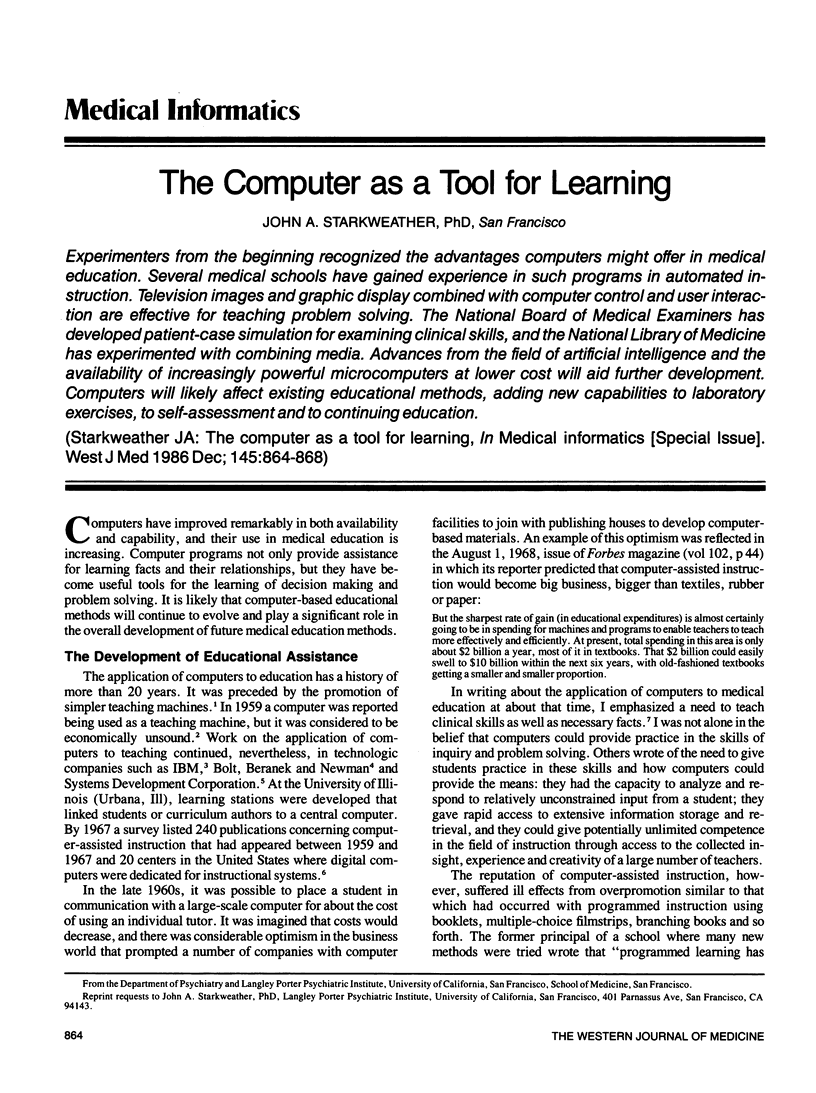
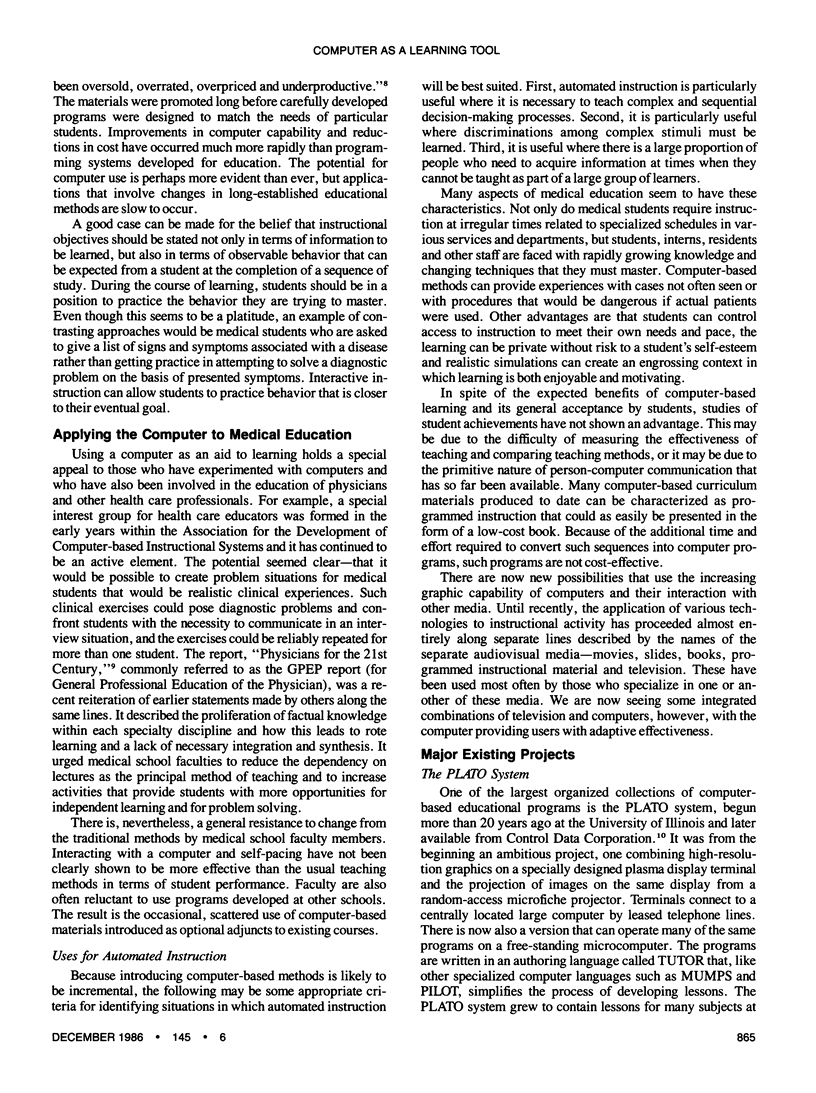
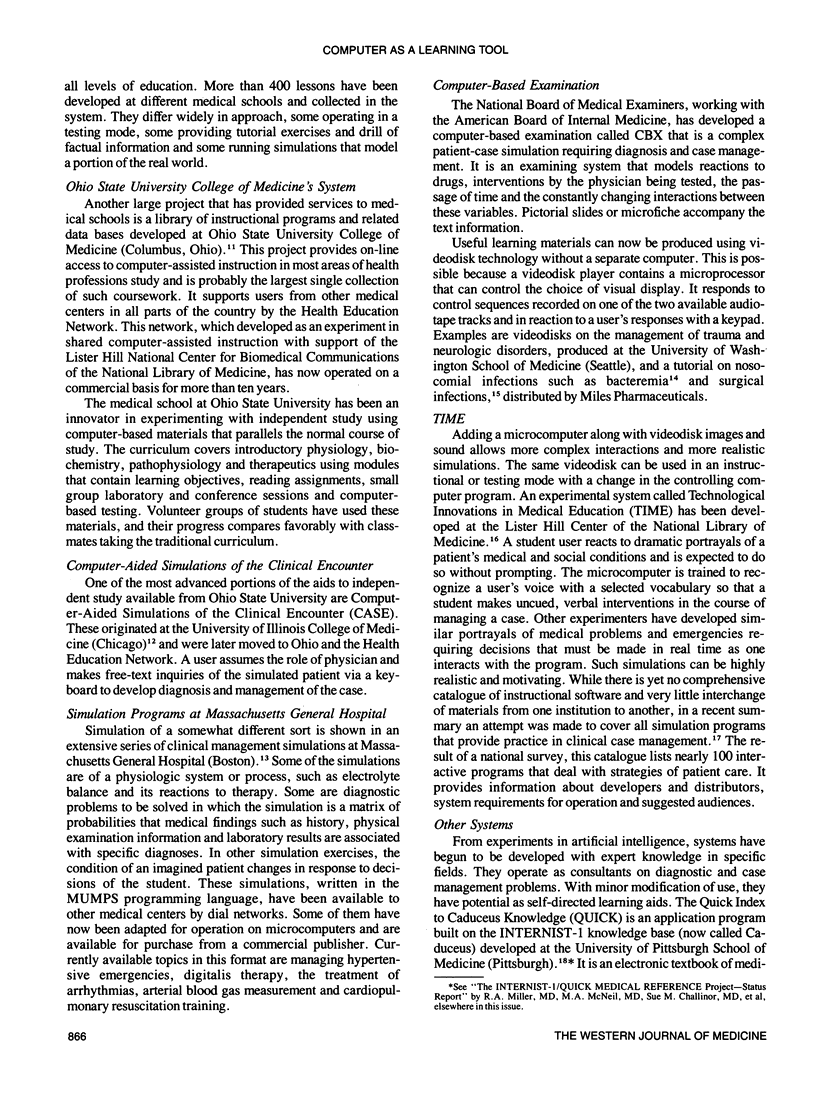
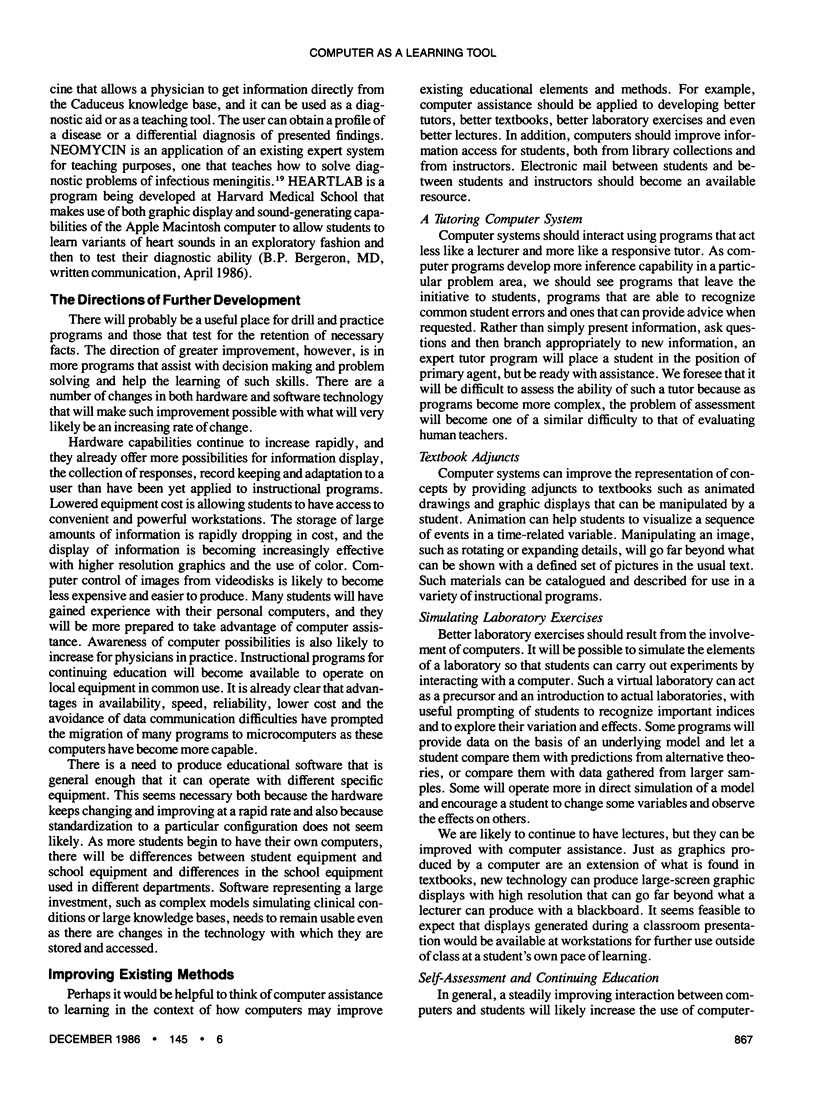
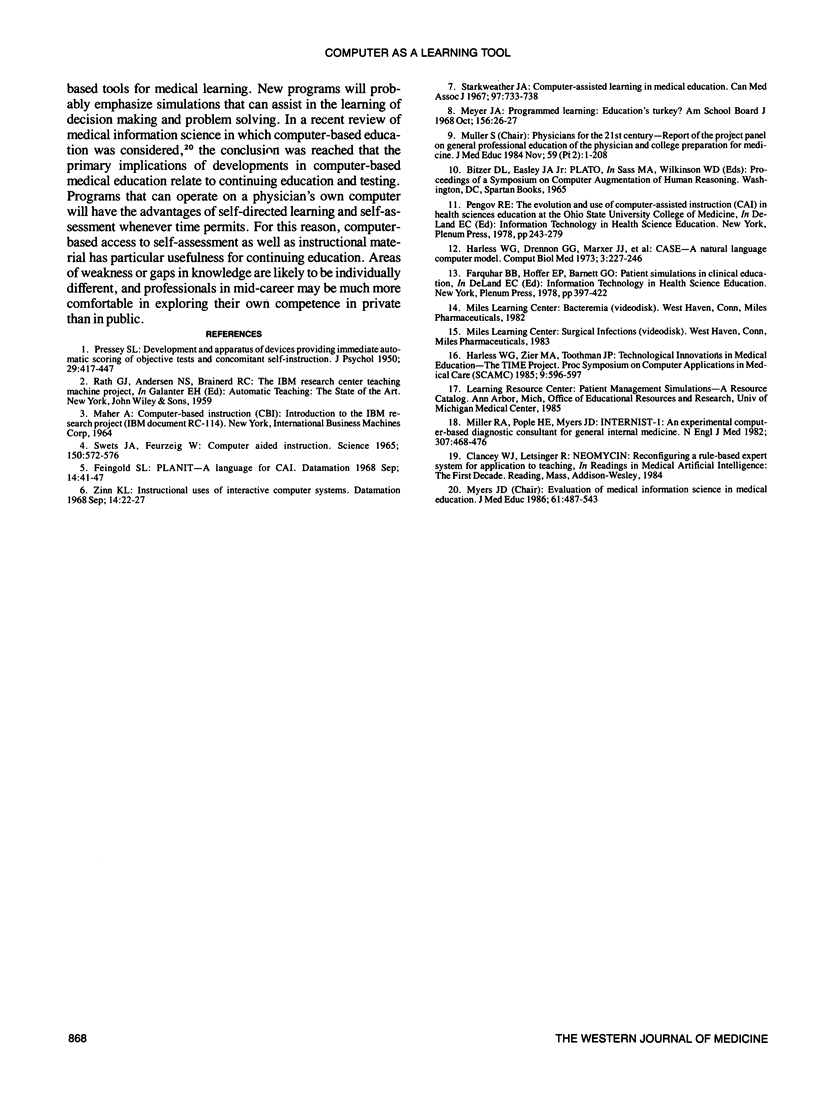
Selected References
These references are in PubMed. This may not be the complete list of references from this article.
- Harless W. G., Drennon G. G., Marxer J. J., Root J. A., Wilson L. L., Miller G. E. CASE--a natural language computer model. Comput Biol Med. 1973 Oct;3(3):227–246. doi: 10.1016/0010-4825(73)90027-9. [DOI] [PubMed] [Google Scholar]
- Miller R. A., Pople H. E., Jr, Myers J. D. Internist-1, an experimental computer-based diagnostic consultant for general internal medicine. N Engl J Med. 1982 Aug 19;307(8):468–476. doi: 10.1056/NEJM198208193070803. [DOI] [PubMed] [Google Scholar]
- Starkweather J. A. Computer-assisted learning in medical education. Can Med Assoc J. 1967 Sep 16;97(12):733–738. [PMC free article] [PubMed] [Google Scholar]
- Swets J. A., Feurzeig W. Computer-aided instruction. Science. 1965 Oct 29;150(3696):572–576. doi: 10.1126/science.150.3696.572. [DOI] [PubMed] [Google Scholar]


